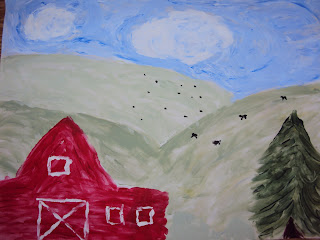
This project was introduced by a PowerPoint that featured representations of different types of lace. After discussing the various types of lace, I was given a half sheet of construction paper to use to draw a design to be used as a template for my lace ornament. I chose a five-petal flower design inside two decorative rings. I used a black sharpie to outline the design I created on the construction paper. Next, I taped a piece of waxed paper over the design. I was given a small amount of clay in a small zip-locked baggie. I kneaded the clay until the water that had separated from the clay was reincorporated into the clay. I then worked the clay to one corner of the baggie and snipped the very tip of that corner being careful to keep the hole small reasoning that I could always make it bigger if I needed to, but I could not make it smaller. I forced the clay out of the small hole using the clay to trace the design onto the waxed paper. (It was sort of like decorating a cake with a tube of frosting). I was careful to keep the lines as uniform as possible and make them thick enough so that when the clay dried and the waxed paper was peeled off, the lines of the lace would be intact. After I finished my pattern with the clay, I painted it with water colors using the warm colors of yellow, orange, red and a shade of red made by mixing black with the red. After the clay dried, it was fairly easy to remove from the waxed paper. I then tied a piece of ribbon to it so that it could be hung.
A lacy clay ornament could be an extension activity in social studies as students study the role clay has played in past or present civilizations. If this study occurred near a holiday (such as Mother's Day or Christmas) the class could be encouraged to make them as gifts. Another social studies possibility might be connecting lace to the time in history when lace was very fashionable and incorporated in men's clothing as well as women's clothing. Children always seem to enjoy comparing the style of dress of earlier days to current fashion.














